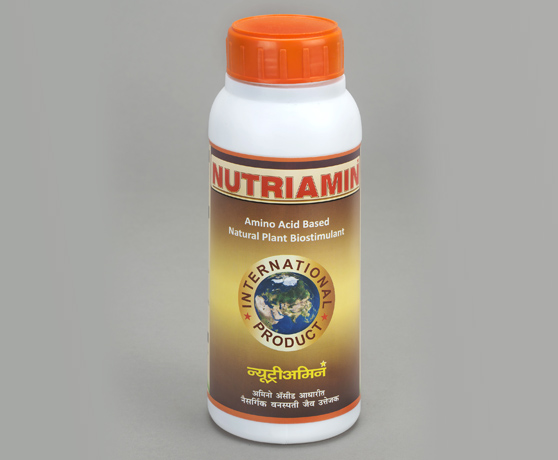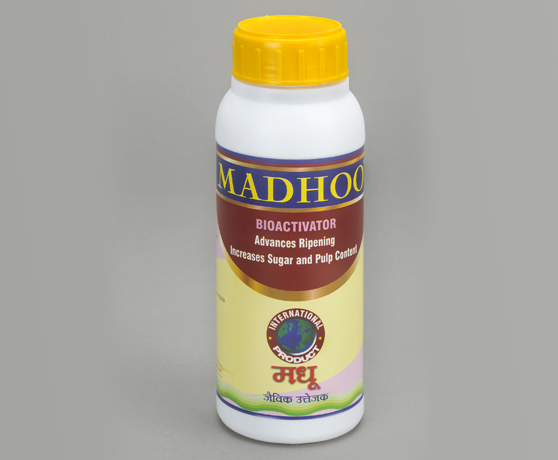


-
INTRODUCTION
1. Fosfonic 03020: Plant disease resistance promoter, based on Potassium Phosphite.
2. Fosfonic 03020 has a double action: acts as both fungicide & plant nutrient.
3. Fosfonic 03020 brings on a positive influence on root health due to specific exudates from roots, which promote growth of certain beneficial micro-organisms, and suppresses plant pathogenic fungi (phycomycetes).
MORE DETAILS
| Element | W/W | W /V |
|---|---|---|
| Water soluble Phosphoric Anhydride (P2O5) | 30% | 42% |
| Water soluble Potassium Oxide (K2O) | 20% | 28% |
- Appearance Clear Yellowish Colour Liquid.
- pH:- 4.5
- Density (g /ml):- 1.43
Hence, it is not possible to recommend a dose suitable for different water quality. However, as it contains a colour indicator, the farmer should observe how many ml per lit are required to get pinkish colour (about 5 pH), as given on the bottle.
- Increases the natural defenses of plants against pathogenic fungi.
- Induces the development of the root system, increased root mass and blooming
- Suppresses root knot nematodes when, used in conjunction with Sea rich
Internationally, it is well documented that Plant diseases caused by Phytopthera, Pythium, Rhyzoctonia, (Downy mildew of grape, cucurbits, Late blight of Tomato, Koleroga of Arecanut, Gummosis in citrus etc can be effectively controlled by use of Fosfonic 03020(Phosphite).
Fosfonic 03020(Phosphite) is highly mobile molecule, which is readily absorbed & translocated throughout the plant, both via xylem and phloem and by both leaves & roots. Fosfonic 03020 is true systemic with ability to move up from leaf to root and from root to leaf. Fosfonic 03020 is fungistatic. Fosfonic 03020 alters the fungal wall and inhibits its further proliferation by suppressing the spore formation. It inhibits oxidative phosphorylation (Energy Production) in the disease organism itself.
Research indicates that Phosphite primes the plant for a rapid and intense response to infection, involving heightened activation of a range of defence responses, such as production of Phytoalexins. Phytoalexins are low-molecular-weight antimicrobial compounds that are produced after infection by microorganisms.
After releasing phytoalexins, rest of the plant starts producing other compounds that increase the plant resistance to infection. As a result, plants quickly produce tannins, specific amino acids, lignins to combat fungal diseases. Growth of Mycelia and Sporulation is prevented (Anti-Sporulant). It also walls off the pathogen by killing off surrounding plant cells, called hypersensitive reaction. In addition, lignifications and cell wall fortification (cell walls are thickened) takes place. Lytic enzymes are also produced by the plant, which in conjunction with the rest of the plant response can cause death of the disease.
These responses are called systemic acquired resistance (SAR), and induced resistance (IR).The functional potassium in Fosfonic 03020 also provides a certain level of disease protection by keeping the plant cell turgid and inducing growth.
After releasing phytoalexins, rest of the plant starts producing other compounds that increase the plant resistance to infection. As a result, plants quickly produce tannins, specific amino acids, lignins to combat fungal diseases. Growth of Mycelia and Sporulation is prevented (Anti-Sporulant). It also walls off the pathogen by killing off surrounding plant cells, called hypersensitive reaction. In addition, lignifications and cell wall fortification (cell walls are thickened) takes place. Lytic enzymes are also produced by the plant, which in conjunction with the rest of the plant response can cause death of the disease.
These responses are called systemic acquired resistance (SAR), and induced resistance (IR).The functional potassium in Fosfonic 03020 also provides a certain level of disease protection by keeping the plant cell turgid and inducing growth.
Phosphite are absorbed by plants and incorporated into cells as phosphite ions (H2PO3-)
The Phosphate (PO4) in fig.1 differs from the Phosphite (PO3) in fig.2 in its stability. The Phosphate is very stable where as Phosphite is unstable and therefore, is quickly taken up by the plant. The Phosphite is many times more efficient and effective in disease control than phosphate. Phosphite ions have direct fungistatic effects on certain plant pathogens, a benefit that is not found with phosphate.

Unlike Phosphate (PO4), Phosphite ion is not involved in any phase of phosphorus metabolism (ATP production, photosynthesis, or respiration); Hence PO3 products are not fertilizers. Over time (after several months), Phosphite can be converted by bacteria to phosphate.
The Phosphate (PO4) in fig.1 differs from the Phosphite (PO3) in fig.2 in its stability. The Phosphate is very stable where as Phosphite is unstable and therefore, is quickly taken up by the plant. The Phosphite is many times more efficient and effective in disease control than phosphate. Phosphite ions have direct fungistatic effects on certain plant pathogens, a benefit that is not found with phosphate.

Unlike Phosphate (PO4), Phosphite ion is not involved in any phase of phosphorus metabolism (ATP production, photosynthesis, or respiration); Hence PO3 products are not fertilizers. Over time (after several months), Phosphite can be converted by bacteria to phosphate.
Citrus and Avocado leaves are notoriously impervious to phosphate, Phosphite is more readily absorbed into plant tissues than phosphate in Citrus and Avocado. The conversion of phosphite to phosphate may result from slow chemical oxidation or by oxidizing bacteria and fungi that have been found living on citrus and avocado leaves. Foliar application of phosphite has proven to be more than just a fungistatic. It increases floral intensity, yield, fruit size, total soluble solids and anthocyanin concentrations; usually in response to a single application.
Citrus/Orange: A single pre bloom foliar application of phosphite, increase flower number, yield and total soluble solids approximately 10 months later at harvest compared with an untreated control
Citrus/Orange: A single pre bloom foliar application of phosphite, increase flower number, yield and total soluble solids approximately 10 months later at harvest compared with an untreated control
- Foliar Spraying: 2-3 ml. / litre of water.
- Root Dip: It also can be used at transplanting by dipping the roots into a 0,25% solution
- Via Root:2.5- 3.5 litre per acre per treatment through drip
- Injuries decontamination: prepare a 6% solution and apply with a paintbrush for gummosis in citrus.
Do not to mix this product with mineral oils, copper compounds, dicofol, dimethoate, dinocap and products rich in calcium or with those products containing a strong alkaline reaction.


